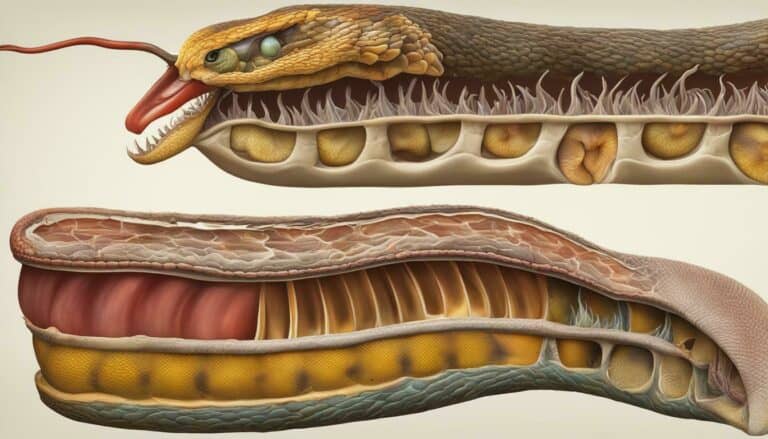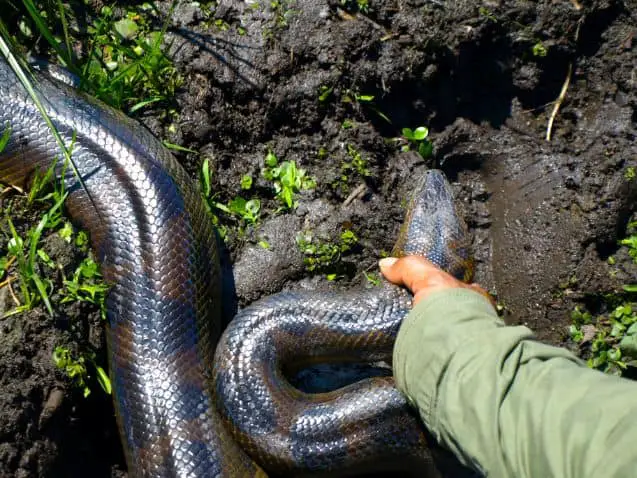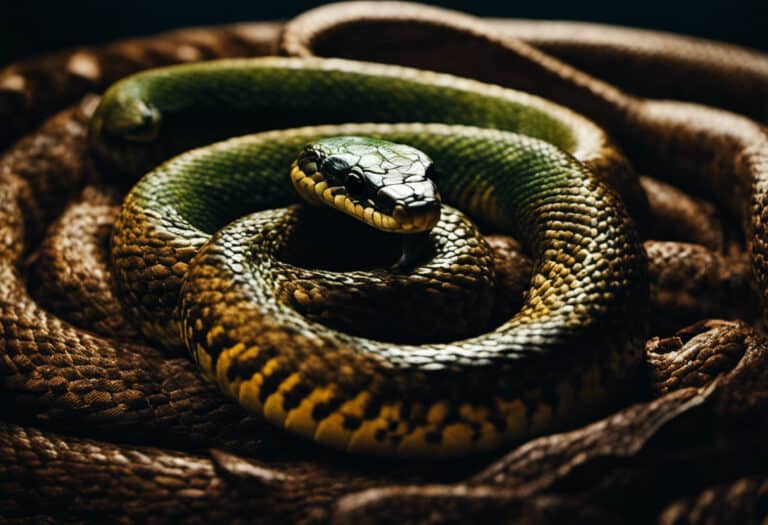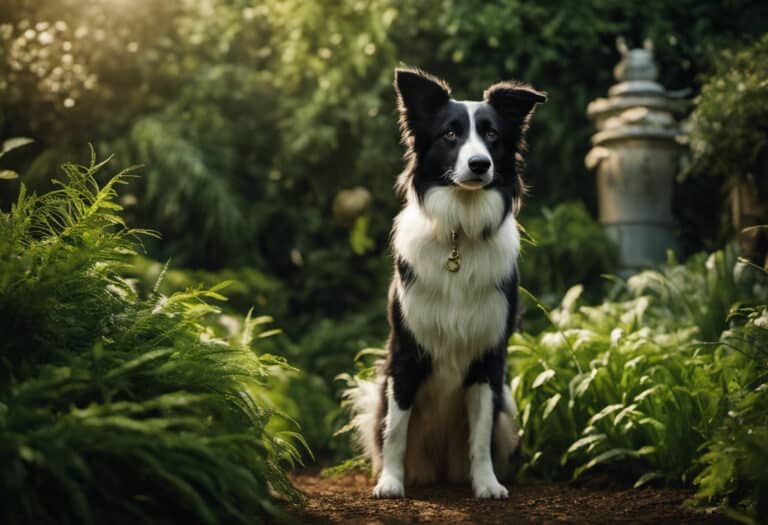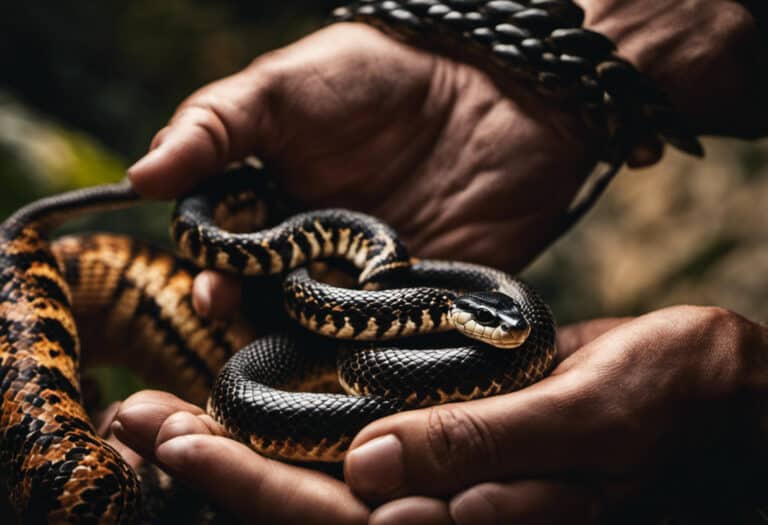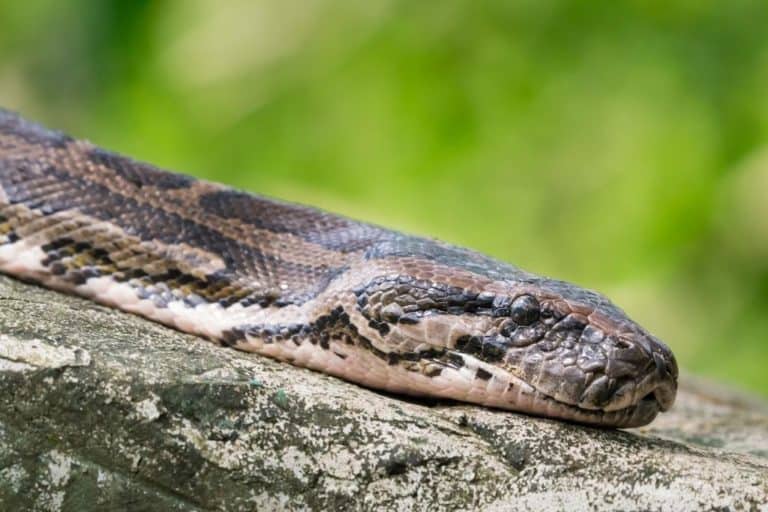What Do Red Racer Snakes Eat?
Do you ever wonder what red racer snakes eat?
You might be surprised to learn that these impressive creatures have a diverse diet. Despite their intimidating appearance, red racer snakes are non-venomous and rely on their speed and agility to catch their prey.
In this article, we will explore the various types of food that red racer snakes consume, including rodents, lizards, and even birds.
Get ready to dive into the intriguing world of these fascinating creatures and discover the secrets of their survival.
Key Takeaways
- Red racer snakes eat a variety of prey including bats, rodents, frogs, snakes, lizards, and birds.
- They locate their prey using a strong sense of smell.
- Red racer snakes are oviparous, meaning they lay eggs that hatch outside the body.
- They have a lifespan of around 13 years in the wild and 20 years in captivity.
Overview of Red Racer Snakes’ Diet
Red racer snakes, also known as red coachwhip snakes, have a varied diet that includes bats, rodents, frogs, snakes, lizards, and birds.
These snakes are skilled hunters and exhibit fascinating hunting behavior. With their excellent eyesight and sense of smell, they actively search for prey in their natural habitats.
Once they locate a potential meal, they use their incredible speed and agility to capture it.
Their impact on prey populations can be significant, as they consume a wide range of animals. This hunting behavior helps to regulate the populations of their prey species, contributing to the balance of ecosystems.
Red racer snakes play a crucial role in maintaining the biodiversity and abundance of their habitats, ensuring the freedom of these ecosystems to thrive.
Hunting Techniques of Red Racer Snakes
To successfully catch their prey, red racer snakes rely on their strong sense of smell and their ability to locate their food using this sense. They employ a variety of hunting techniques to capture their prey, including birds.
These snakes are incredibly fast and agile, allowing them to chase down their avian targets. They often use their camouflage to blend into their surroundings, making it easier for them to surprise their prey.
Once they’ve located a bird, red racer snakes will strike with lightning speed, using their sharp teeth to deliver a quick and fatal bite.
However, it’s important to note that while red racer snakes do consume birds as part of their diet, their impact on bird populations is generally considered to be minimal, as they primarily feed on smaller species.
Prey Items of Red Racer Snakes
You’ll be interested to know that the prey items of red racer snakes include bats, rodents, frogs, lizards, and birds.
- Bats: Red racer snakes are skilled hunters and can catch bats in flight, using their speed and agility to their advantage.
- Rodents: These snakes are known for their ability to capture and consume a variety of rodents, such as mice and rats, which helps control their populations in ecosystems.
- Frogs: Red racer snakes are opportunistic feeders and will prey on frogs when they’ve the chance.
- Birds: Birds, both small and medium-sized, are also on the menu for red racer snakes. They use their quick movements and stealth to ambush their avian prey.
The hunting behavior of red racer snakes plays a crucial role in maintaining the balance of the ecosystem. By controlling populations of bats, rodents, frogs, and birds, they help regulate the numbers of these species and prevent any potential negative impacts on the ecosystem.
Importance of Bats in Red Racer Snakes’ Diet
Bats play a crucial role in the diet of red racer snakes, providing them with a valuable source of food. These snakes are opportunistic predators and have a diverse diet that includes a range of prey items. Bats are particularly important for red racers because they provide a significant source of nutrition.
Red racer snakes have the ability to locate bats using their strong sense of smell. They actively hunt for bats during the night, when bats are most active. By consuming bats, red racer snakes help control the population of these flying mammals, which can have a significant impact on the local ecosystem.
Additionally, by preying on bats, red racers reduce the potential competition for resources, such as insects and fruits, which may benefit other species, including amphibians and reptiles.
The predation of lizards by red racer snakes is also an important aspect of their diet, further highlighting their role as top predators in their environment.
Rodents: A Major Food Source for Red Racer Snakes
Rodents are a major food source for red racer snakes, providing them with a consistent and abundant source of nutrition. These snakes have developed specific feeding behaviors to effectively capture and consume their rodent prey.
- Hunting Strategy: Red racer snakes use their speed and agility to chase down and capture rodents. They rely on their excellent eyesight and sense of smell to locate their prey.
- Ambush Techniques: These snakes may also employ ambush techniques, waiting patiently for rodents to come within striking distance before launching a sudden attack.
- Swallowing Prey: Once a red racer snake captures a rodent, it will use its powerful jaws to swallow the prey whole. Their flexible jaws and expandable bodies allow them to consume rodents that are larger than their own heads.
- Digestion Process: Red racer snakes have a highly efficient digestive system that enables them to break down and absorb the nutrients from their rodent prey. They’ve a specialized enzyme called venomase, which helps them digest the bones and fur of their prey.
Red Racer Snakes’ Consumption of Frogs and Toads
Red racer snakes, also known as Masticophis flagellum piceus, actively consume frogs and toads as part of their diet. These snakes exhibit a particular preference for amphibian prey, seeking them out in their natural habitats.
The consumption of frogs and toads by red racer snakes may have an impact on local frog populations and play a significant ecological role in maintaining balance within their ecosystem.
Amphibian Prey Preference
Amphibians such as frogs are also a preferred source of food for the red racer snake. This amphibian predation can have a significant impact on amphibian populations.
The red racer snake’s diet consists of various prey items, and amphibians make up a substantial portion of their diet. Here are four reasons why amphibians are an important food source for the red racer snake:
- Nutritional value: Amphibians provide a rich source of nutrients, including proteins, vitamins, and minerals, which are essential for the snake’s growth and survival.
- Abundance: Amphibians are often abundant in their habitats, making them readily available and easily accessible for the red racer snake.
- Predatory behavior: The red racer snake has adapted to efficiently capture and consume amphibians, utilizing their quick reflexes and agility to catch their prey.
- Ecological balance: As predators, red racer snakes help regulate amphibian populations, preventing their overabundance and maintaining a healthy ecosystem.
Understanding the red racer snake’s preference for amphibian prey is crucial for conserving both snake and amphibian populations, ensuring the freedom and stability of these interconnected ecosystems.
Impact on Frog Populations
You may be interested to know that the red racer snake’s preference for amphibian prey can have a significant impact on frog populations. Red racers, also known as Masticophis flagellum, play a crucial role in the ecosystem by regulating the population dynamics of frogs.
As an active predator, red racers feed on various amphibians, including frogs. Their diet consists of both adult frogs and their tadpoles. This feeding behavior can lead to a decline in frog populations, as red racers can consume a significant number of individuals.
This, in turn, affects the overall balance of the ecosystem. Understanding the impact of red racer predation on frog populations is essential for conservation efforts and maintaining the biodiversity of our natural habitats.
Ecological Role of Consumption?
When red racers consume a significant number of frogs and their tadpoles, it can disrupt the balance of the ecosystem. This ecological impact is due to the red racer’s prey selection. Here are four key factors to consider:
- Prey Availability: Red racers rely on frogs and their tadpoles as a food source. If they consume a large portion of the frog population, it can lead to a decrease in their numbers.
- Trophic Cascade: The reduction of frogs can cause a trophic cascade, where the absence of frogs disrupts the entire food chain. This can negatively affect other organisms that depend on frogs for food.
- Altered Habitats: With fewer frogs, their presence in the ecosystem decreases. This can lead to changes in vegetation and water sources, impacting other species that rely on these habitats.
- Population Control: Frogs play an important role in controlling insect populations. When their numbers decline, there may be an increase in insect populations, which can have further ecological consequences.
Overall, the consumption of frogs by red racers can have far-reaching effects on the ecosystem, highlighting the intricate relationships between species and the importance of maintaining biodiversity.
Interactions Between Red Racer Snakes and Other Snakes
Red racer snakes may come into contact with other snakes, such as gopher snakes or king snakes, while competing for the same prey or habitat. These interactions can lead to territorial disputes, as each snake seeks to establish dominance.
When encountering rattlesnakes, red racers may exhibit a cautious approach. They may engage in a behavior known as ‘head-jousting,’ where both snakes lift their heads and push against each other, testing each other’s strength. These encounters aren’t aggressive but rather a way to establish hierarchy and avoid unnecessary conflict.
Red racers use their speed and agility to outmaneuver other snakes and secure their territory. These interactions are important for the survival and reproductive success of red racer snakes, as they ensure access to essential resources in their environment.
Red Racer Snakes’ Predation on Lizards
If you spot a lizard in the desert, chances are it’s being hunted by a red racer snake. These snakes are highly skilled and efficient predators, employing various techniques to capture and consume their lizard prey. Here are four key lizard hunting techniques utilized by red racer snakes:
- Ambush: Red racers often lie in wait, hidden among rocks or vegetation, ready to strike when a lizard comes within range. Their quick reflexes and lightning-fast strikes make them formidable ambush predators.
- Pursuit: Red racers are known for their incredible speed and agility. When they detect a lizard, they give chase, using their long, slender bodies to swiftly maneuver through the desert landscape and capture their prey.
- Constriction: Once a red racer catches a lizard, it employs constriction to subdue and immobilize its prey. By coiling its body tightly around the lizard, the snake restricts its movement and prevents escape.
- Swallowing: After subduing the lizard, the red racer snake unhinges its jaws to accommodate the size of its prey. It then slowly engulfs the lizard, using its powerful muscles to push it further down its throat for digestion.
The impact of red racer snakes on lizard populations is significant. Their efficient hunting techniques and ability to consume various lizard species contribute to the regulation of lizard populations in their respective habitats.
However, it’s important to note that red racers are just one of many factors that influence lizard populations, including predation from other species, habitat loss, and climate change.
Birds: Another Target of Red Racer Snakes’ Appetite
Birds are another prey item on the menu for the red racer snake. With its ability to climb trees and its quick, agile movements, the red racer is adept at hunting birds in their natural habitats.
This predation can have significant implications for bird populations, especially in areas where the red racer snake is abundant and bird species are already facing other threats.
Bird Hunting Techniques
The red racer snake, also known as the red coachwhip snake, uses its strong sense of smell to locate prey, including bats, rodents, frogs, snakes, lizards, and birds. When it comes to hunting birds, the red racer employs several techniques that showcase its agility and speed.
- Ambushing: The red racer hides in vegetation or on elevated perches, waiting for birds to pass by. It strikes swiftly, using its powerful jaws to grab the unsuspecting prey.
- Pursuit: This snake is a skilled sprinter, capable of reaching speeds of up to 10 miles per hour. It chases after birds on the ground or in the air, relying on its excellent eyesight and quick reflexes to catch them.
- Camouflage: The red racer’s coloration helps it blend in with its surroundings, making it difficult for birds to spot. It uses this advantage to get close to its prey before launching an attack.
- Ambush from above: The red racer sometimes climbs trees or shrubs to get a better vantage point. From there, it can strike at birds flying overhead, surprising them with its lightning-fast movements.
Impact on Bird Populations
You may be curious about how the red racer’s predation habits affect the populations of birds in its habitat.
The impact on bird behavior due to the red racer’s hunting techniques can have ecological consequences.
As an agile and fast predator, the red racer is known to prey on various species of birds.
Its ability to climb trees and move swiftly on the ground allows it to ambush birds during their nesting or foraging activities.
This constant threat of predation can lead to changes in bird behavior, such as altered nesting locations, increased vigilance, and decreased foraging efficiency.
These behavioral changes can have cascading effects on the bird population, potentially leading to reduced reproductive success and overall population decline.
Understanding the ecological consequences of the red racer’s predation on bird populations is crucial for maintaining the balance and diversity of the ecosystem.
Competition With Other Predators?
As an agile and fast predator, the red racer competes with other predators for limited food resources in its habitat.
Competition with owls: Red racers are at risk of predation by great horned owls. These birds of prey have keen eyesight and sharp talons, making them formidable predators. Red racers must be vigilant and use their speed and agility to evade capture.
Competition with coyotes: Coyotes are opportunistic predators and will prey on red racers if given the chance. However, red racers are adept at escaping from their grasp by utilizing their fast pace and ability to maneuver through the dense vegetation.
Limited food resources: Red racers primarily feed on small mammals, birds, lizards, and frogs. These food sources can be scarce, especially in arid desert environments where the red racer is commonly found. This scarcity intensifies the competition between the red racer and other predators.
Adaptations for competition: The red racer has evolved to be an efficient predator. Its sleek body and smooth scales enable it to move swiftly through its environment. Additionally, its ability to camouflage with its surroundings allows it to remain hidden from both prey and predators, giving it an advantage in the competition for food.
The Role of Smell in Red Racer Snakes’ Prey Detection
Snakes like the red racer use their strong sense of smell to locate their prey. Olfaction plays a crucial role in the prey detection process for these reptiles.
The red racer possesses a specialized organ called the Jacobson’s organ, located in the roof of its mouth. This organ allows them to detect and analyze chemical cues in the environment. By flicking their tongues, they collect odor molecules and transfer them to the Jacobson’s organ for processing.
This enables them to detect the presence of potential prey, such as rodents, birds, lizards, and even other snakes. The red racer’s ability to rely on its sense of smell for prey detection allows it to effectively navigate its surroundings and secure its next meal.
Frequently Asked Questions
How Do Red Racer Snakes Locate Their Prey?
Red racer snakes locate their prey using a strong sense of smell. Factors that influence their success rate in hunting include the availability of their preferred prey, environmental conditions, and their ability to move quickly and silently.
What Is the Mating Season for Red Racer Snakes?
During the mating season, red racer snakes engage in behaviors to reproduce. They exhibit courtship rituals and mate in May. The female lays a clutch of 4-20 eggs in early summer, which hatch after 45-70 days.
How Long Does It Take for Red Racer Snake Eggs to Hatch?
Red racer snake eggs take 45-70 days to hatch. During incubation, red racer snakes protect their eggs by burying them in warm, sandy soil. They rely on the soil’s temperature to provide the optimal conditions for development.
What Is the Average Lifespan of a Red Racer Snake in Captivity?
The average lifespan of a red racer snake in captivity is around 20 years. Their breeding behavior involves mating in May and laying a clutch of 4-20 eggs in early summer.
Are There Any Other Predators Besides Great Horned Owls and Coyotes That Eat Red Racer Snakes?
Birds of prey, such as hawks and eagles, also prey on red racer snakes. They are diurnal and can be seen basking near roads. Their diet includes bats, rodents, frogs, snakes, lizards, and birds.
Conclusion
In conclusion, the red racer snake’s diet is incredibly diverse, consisting of a wide range of prey items including bats, rodents, lizards, and even birds. Their hunting techniques, combined with their excellent camouflage and keen sense of smell, make them highly efficient predators.
It’s fascinating to see how these non-venomous snakes have adapted to their environment and rely on such an array of food sources to survive. Their diet truly showcases their impressive ability to thrive in various ecosystems.
